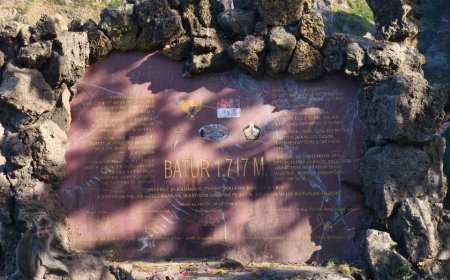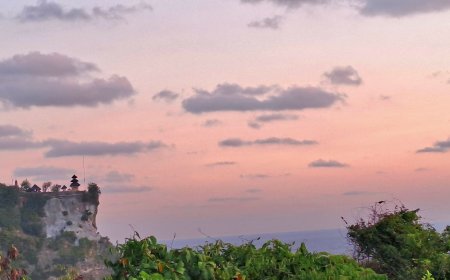Barong Brutuk: The Guardian of Trunyan Village
One of the districts in Bali has a unique and classic Barong Dance that has a different form from barong in general. This barong dance is known as Barong Brutuk. This barong uses dried banana leaves and is nicknamed Barong the guardian in Trunyan Village. Barong Brutuk has a sacred meaning and cannot be found in any place or on any day. For more details, please refer to this article.

Trunyan Village is a village located in the Kintamani area, Bangli Regency which is already famous for its traditions and unique cemetery. This unique cemetery means that the bodies of people who have died in Trunyan Village are not burned or buried, but these bodies are left lying on the ground surrounded by fences made of bamboo. And near the grave there is a Taru Menyan Tree which is believed to absorb the foul odor of the corpse.
Well, in addition to the famous Trunyan Village which has a unique funeral tradition, Trunyan Village also holds a wealth of local wisdom in the form of sacred and traditional arts that are no less interesting, namely the Barong Brutuk Dance.
Barong Brutuk is a sacred and traditional dance that is thought to have existed before the entry of Hinduism into Bali and was passed down from generation to generation by the ancestors of the local population called the Guardians of Trunyan Village. Barong Brutuk started as a large and tall statue in the Pancering Jagat Temple located in Trunyan Village. The name of the statue is Datonta (Bhatara Ratu Sakti Pancering Jagat). According to the belief of the people in Trunyan Village, Bhatara Ratu Sakti Pancering Jagat has 21 unen-unen (subordinates). From this story, a mask called Barong Brutuk was formed.
Barong Brutuk has its own characteristics and characters, there are masks that have firm and strong faces. The people in Trunyan Village believe that the number of masks changes every day sometimes totaling 21 or 23 and even 19 masks, so whatever the number of masks is in storage will be performed according to the number.
More uniquely, this Barong Brutuk dance performance is not accompanied by gamelan like barong dance performances in general. Likewise, the clothes used by Barong Brutuk are a bunch of dried banana leaves (Daun Kraras). The dried banana leaves are only allowed to be taken from Pinggan Village, Kintamani. The banana leaves are knitted using a rope from the banana leaf skin, then formed like a skirt hung on the neck, shoulders and waist of the dancer.

Barong Brutuk Dance Performance (Photo Source: Pujangga Nagari Nusantara Channel)
The clothes made of dried banana leaves are relatively thick because they are covered with three sets of kraras leaves, and the dancer's underwear is made of dried banana tree petals and wears a mask, and carries a whip (Pecutan).
As for the restrictions before the Barong Brutuk performance at Pancering Jagat Temple in Trunyan Village, the teruna dancers (male teenagers) undergo a sacred ritual, the dancers are purified for 42 days around Pancering Jagat Temple near the Datonta Statue. During the purification, dancers will learn ancient songs (pupuh), clean the temple area, collect kraras leaves in Pinggan Village and dancers are also not allowed to have contact with women.
The Barong Brutuk dance performance begins by circling the temple wall three times while whipping the whip (Pecutan) to the people of Trunyan Village, the whipping of the whip is believed to be a sign of Tamba (medicine) that can cure diseases. as well as the leaves that come off the Barong Brutuk will be taken which symbolizes the bearer of blessings and safety. Barong Brutuk even throws fruits from offerings to the audience which are believed to provide prosperity and prosperity. Not only that, this Barong Brutuk dance also has a meaning of purity and self-control which is proven to be felt by Barong Brutuk dancers.
The Barong Brutuk dance is performed every two years during the Odalan (Feast Day) or Ngusaba Kapat ceremony at Ratu Pancering Jagat Temple which falls every Purnama Sasih Kapat or known as Kapat Lanang and Kapat Wadon in Trunyan Village. If it coincides during Ngusaba Kapat Lanang, this Barong Brutuk Dance is performed by Teruna (Male Teenagers). As for the next Ngusaba known as Kapat Wadon, this is an activity of Teenage Girls who fill activities during the piodalan ceremony at Ratu Pancering Jagat Temple by weaving sacred cloth. Because of its sacredness and uniqueness, Barong Brutuk Dance cannot be performed carelessly or for tourists and cannot be found anywhere else, other than in Trunyan Village.





























































